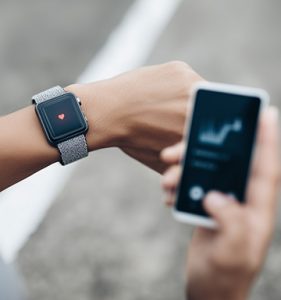The Rise of Wearable Tech in Sports: How Smart Devices Are Preventing Injuries Before They Happen
 Ever feel like wearable tech sounds a little too good to be true? With smartwatches, fitness trackers, and even sensor-packed sleeves on the rise, it’s easy to wonder: Can these devices really help prevent injuries? Science and real-world results say yes.
Ever feel like wearable tech sounds a little too good to be true? With smartwatches, fitness trackers, and even sensor-packed sleeves on the rise, it’s easy to wonder: Can these devices really help prevent injuries? Science and real-world results say yes.
As wearable technology becomes more mainstream, it’s reshaping how we train, recover, and, most importantly, stay safe. From the training grounds of elite athletes to neighborhood joggers, smart wearables are no longer reserved for professionals. They’re becoming everyday tools that help people move more safely and effectively.
Smart sleeves, AI-powered insoles, and GPS-tracking bands aren’t just high-tech accessories; they’re evolving into crucial allies in protecting joints, muscles, and bones from the stress of repetitive movement and overexertion. For athletes and active individuals alike, the future of injury prevention is more accessible than ever before.
From Data to Defense: How Wearables Are Rewriting Injury Prevention
Injuries, especially overuse injuries, often give off subtle warning signs long before they become serious. That’s where wearable tech comes in. Devices that monitor biomechanics, fatigue levels, and muscle activation can detect issues long before you’d notice them yourself.
A comprehensive 2023 review in BMC Sports Science, Medicine and Rehabilitation found that using wearables like GPS trackers, accelerometers, and inertial sensors to monitor training loads helps prevent both acute and chronic injuries. These tools can highlight stress patterns and fatigue indicators in real time, empowering athletes and active individuals with a proactive edge in preventing orthopedic injuries like joint overuse and ligament strain.”
Athletes Are Already All In
Professional athletes are embracing smart wearables to enhance both performance and injury prevention. Take Theo Health’s “Alpha Shorts”, for example. They are currently being tested by PGA Tour star Xander Schauffele. These sensor-packed compression shorts feature inertial measurement units to track key metrics like knee alignment, symmetry, rep depth, and tempo, providing real-time, lab-grade feedback to support form, fatigue management, and recovery.
Fall Detection: Not Just for Seniors Anymore
Fall detection isn’t just for older adults; it’s also vital for anyone recovering from orthopedic surgeries (like hip or knee replacements) or those at higher risk for falls due to injury or balance issues.
A 2022 review in the International Journal of Digital Health highlighted the growing role of wearable sensors in orthopedic trauma recovery, including sensing real-world walking speed, gait stability, and, importantly, fall events during daily activities. These wearable systems can automatically detect falls and mobility issues outside of clinical settings, offering real-time feedback and alerts to both patients and care teams.
That means smart devices are doing more than tracking workouts; they can monitor your recovery progress, alert you or loved ones after a fall, and help prevent complications that often arise from untreated injuries or staggered rehabilitation.
Not Just High-Tech Hype: Real Benefits for Everyone
You don’t need to be a professional athlete to benefit from wearable tech. These tools are becoming more accessible and offer meaningful advantages for people of all fitness levels, allowing you to:
- Track early signs of fatigue before your form breaks down
- Monitor your gait and posture with smart insoles or sleeves
- Log your workouts and rest days to prevent overtraining
- Detect falls and automatically alert emergency contacts
- Monitor heart rate and rhythm to catch irregularities early
Understanding your body in motion will help you make smarter decisions for your long-term health
Prevention Is Power
At OrthoIllinois, we believe prevention is one of the most powerful tools in healthcare, and wearable technology is giving patients and providers more data, insight, and confidence than ever before. Whether you’re recovering from surgery, managing joint pain, training for a race, or just trying to stay active, wearable devices can help you stay ahead of injuries, respond quickly to health changes, and train smarter over time.


